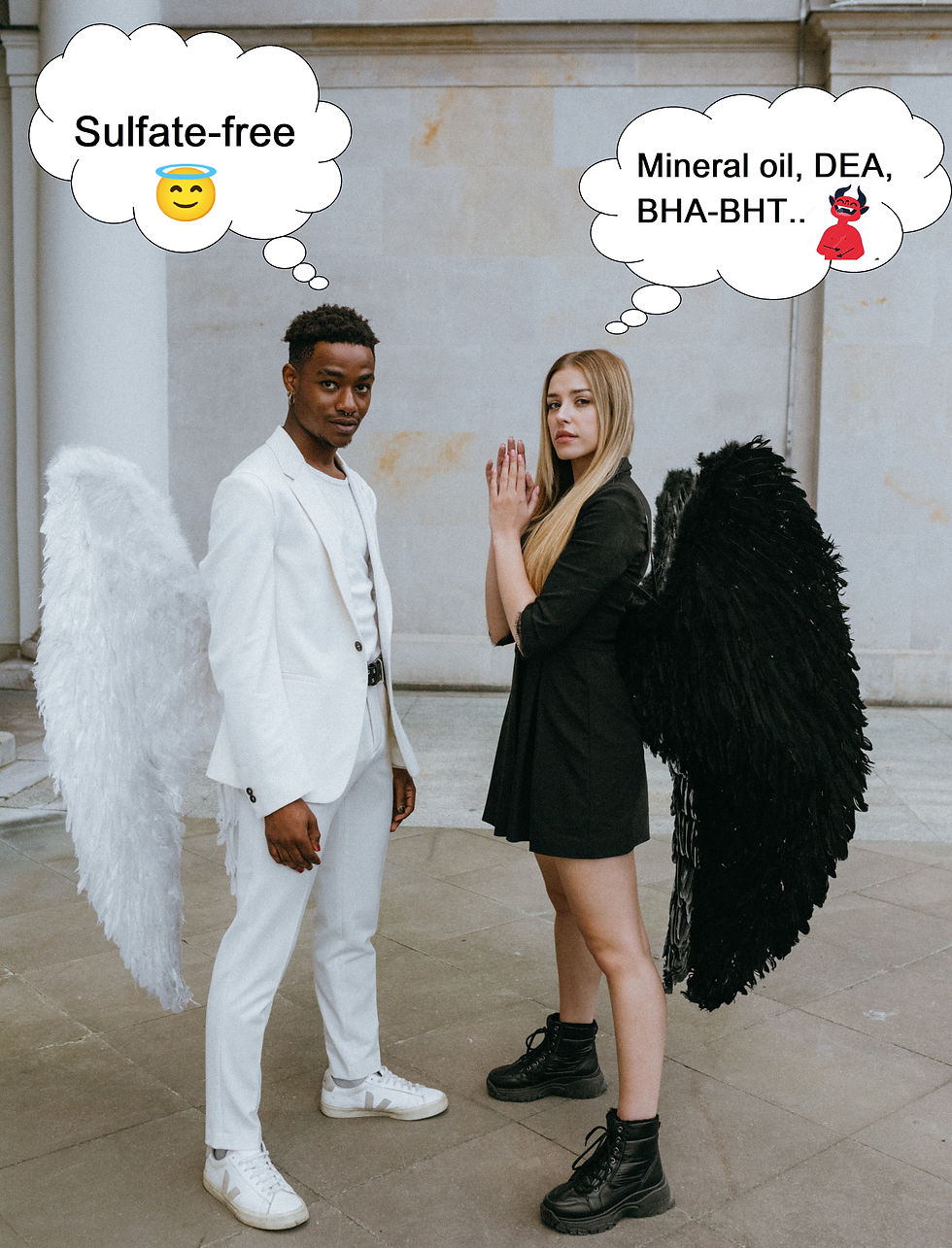Fact vs. Fear : Chemicals in Cosmetic Products
- babassu soaps

- 10. Nov. 2021
- 3 Min. Lesezeit
Aktualisiert: 4. Nov. 2024

Introduction to DHMO
Do you remember or have you heard of the DHMO (DiHydrogen MonOxide) scandal? It seems to be about a dangerous chemical... but it's just one of the possible scientific names water could have, we usually call it water because it's so common.

This highlight amusingly shows how information can be twisted for a cause. Misinformation is spread in public because we cannot always grasp the proper context of the communication. Giving them more context is the reason for our series of articles on marketing claims.
Everything you can touch or smell is made of chemicals, so there is no such thing as a chemical-free cosmetic. This term is so vague that it can mean practically anything and nothing, but in the minds of consumers it is associated with a substance that has a certain negative effect:
CHEMICAL = BAD
We continue with our water example:
it is a corrosive chemical
if you drink it in too large quantities, you can die
it contributes to the greenhouse effect
it is used as a coolant in nuclear reactors...
I think we can stop with the examples here (...we are actually pro-water). The same analogy can be made with drugs or food...the danger is the dose, so... Keep your critical mind trained :)
"Not using" certain ingredients
Paraben free, silicone free, soap free... free of sulfates or mineral oils... You have probably read one of these prayers on a package before... but how relevant are these claims? This is the art of professing a truth (or an effort by the company) to likely hide one or more irresponsible behaviors. Reading the ingredient list is key here to understand if we are in this situation. Since 2019, these claims are more regulated, but you can still see them on the internet. In the minds of our customers, a product that is free of harmful substances always appears as a positive point that makes us buy that particular product. There are many possible combinations of chemicals that together make a cream, a shampoo, a soap... Some of them can be grouped into families that consumers are familiar with, such as "parabens," "silicones," "allergens," "sulfates..." and not all members of these families are to be considered equal, there are good and bad substances.

...when the claim make nonsense (now more strictly regulated)
Even among these families of chemicals, not all are relevant to the properties of the final product. For example, it would not make sense to make a toothpaste with silicones in the formulation, but the packaging could state "silicone-free."
...when the claim is shifty
This "free from" claim, if the marketing were honest, could also be written as "We are removing this substance, which currently has bad publicity, and instead using another controversial substance that has not (yet) received any special attention."

Now, the claim is usually so meaningful that the absence of an ingredient must be justified. Let us take the example of a shower gel where parabens or sulfates are relevant but not. If the manufacturer decides to avoid using sulfates in its formulations, it can state "sulfate-free." But remember to check on the list of ingredients what the product does not brag about:
certain parabens ?
other doubtful preservatives ?
mineral oil ?
phenoxyethanol ?
etc...
Sources:


